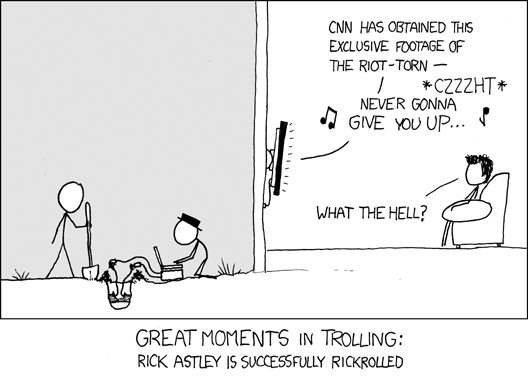 (Gleefully taken from Gifs of Popular Rappers. You have no idea how desperately I've waited for an opportunity to use one of these.)
(Gleefully taken from Gifs of Popular Rappers. You have no idea how desperately I've waited for an opportunity to use one of these.)Purple drank is a Southern-based recreational drug/cocktail that came to prominence in pop culture through the hip-hop community. The drink consists of prescription cough syrup (containing codeine and promethazine), soda, and (sometimes) Jolly Rancher candy. The beverage's color is the result of the cough syrup, though color may vary. The affect is similar to taking an opiate. Other names for the concoction include syrup, sizzurp, lean, drank, barre, purple jelly, and Texas tea.
The illegal beverage has been popularize, and glamorized, by the hip hop community. Generally, it is assumed to be the beverage inside studded chalices (like the one above) and Styrofoam cups on the red carpet (below).
 One particularly popular fan is Lil Wayne (above), who was the source of speculation in 2007 and 2008—he carried a Styrofoam cup everywhere. He told MTV News in February 2008:
One particularly popular fan is Lil Wayne (above), who was the source of speculation in 2007 and 2008—he carried a Styrofoam cup everywhere. He told MTV News in February 2008:In addition to being highly addictive, the beverage is also a deadly gateway drug. The beverage, which was invented in the South (though MTV says that it is also very popular in Philadelphia), has become popular with the Young People (much like cheese)."Do your history, do your research," he vented. "It ain't that easy — feels like death in your stomach when you stop doing that sh--. You gotta learn how to stop, you gotta go through detox. You gotta do all kinds of stuff. Like I said, I'm a selfish-ass n---a. I feel like everything I do is successful and productive. It's gonna be hard to tell me I'm slipping. It's hard to sit and tell a n---a 'Stop.' 'F---, how can we tell this n---a to stop when every f---ing thing he do is successful? This n---a is making progress. He just went and talked to kids and that sh-- was amazing.' Feel me? So what am I doing wrong?
"Let me do me. Everybody's got their thing," he continued with frustration. "Why focus on me? Don't compare me to no one. Don't compare me to no one who has passed, and why they passed. I can walk out this b---h right now and get hit by a bus. Don't judge me. You wanna judge me, put on a black gown and get a gavel. Get in line with the rest of them that's about to judge me. I got court dates every other month. It's me against the world — that's how I feel."
The beverage has been named the cause of death for DJ Screw—who popularized the drink in Houston in the '90s—and Pimp C, and speculated as the cause leading to the coma, and subsequent heart attack, of Big Moe. All entertainers proclaimed their adoration for the drug through music.
Drank/Syrup has also landed famous people in trouble with the law. Terrence Kiel, then a member of the San Diego Chargers, plead guilty in 2007 to felony and misdemeanor charges for shipping cough syrup. (The felony charge was dropped following 175 volunteer hours and counseling.) Johnny Jolly, also a professional football player, was arrested in 2008 for having 200 grams of codeine, which is a second-degree felony. Jolly's trial began in March. If convicted, he faces two to 20 years in jail.
The popularity of the illegal cocktail spawned a legal energy drink called Drank. The beverage's slogan is "Slow your roll" and the contents within the purple are supposed to bring forth "extreme relaxation." The drink contains melatonin, valerian root, and rose hips.
Additional Resources:
Purple drank, Wikipedia
Purple drank, Urban Dictionary
Lil Wayne On Syrup: 'Everybody Wants Me To Stop ... It Ain't That Easy', MTV News
Cough syrup found in Pimp C's hotel had no label, The Houston Chronicle
Codeine Overdose Killed DJ Screw, Medical Examiner Says, MTV News
DEA warns of soft drink-cough syrup mix, USA Today
Chargers' Kiel pleads guilty in attempt to avoid jail, ESPN
Jolly faces unclear future, The Journal Sentinel
Drank



















